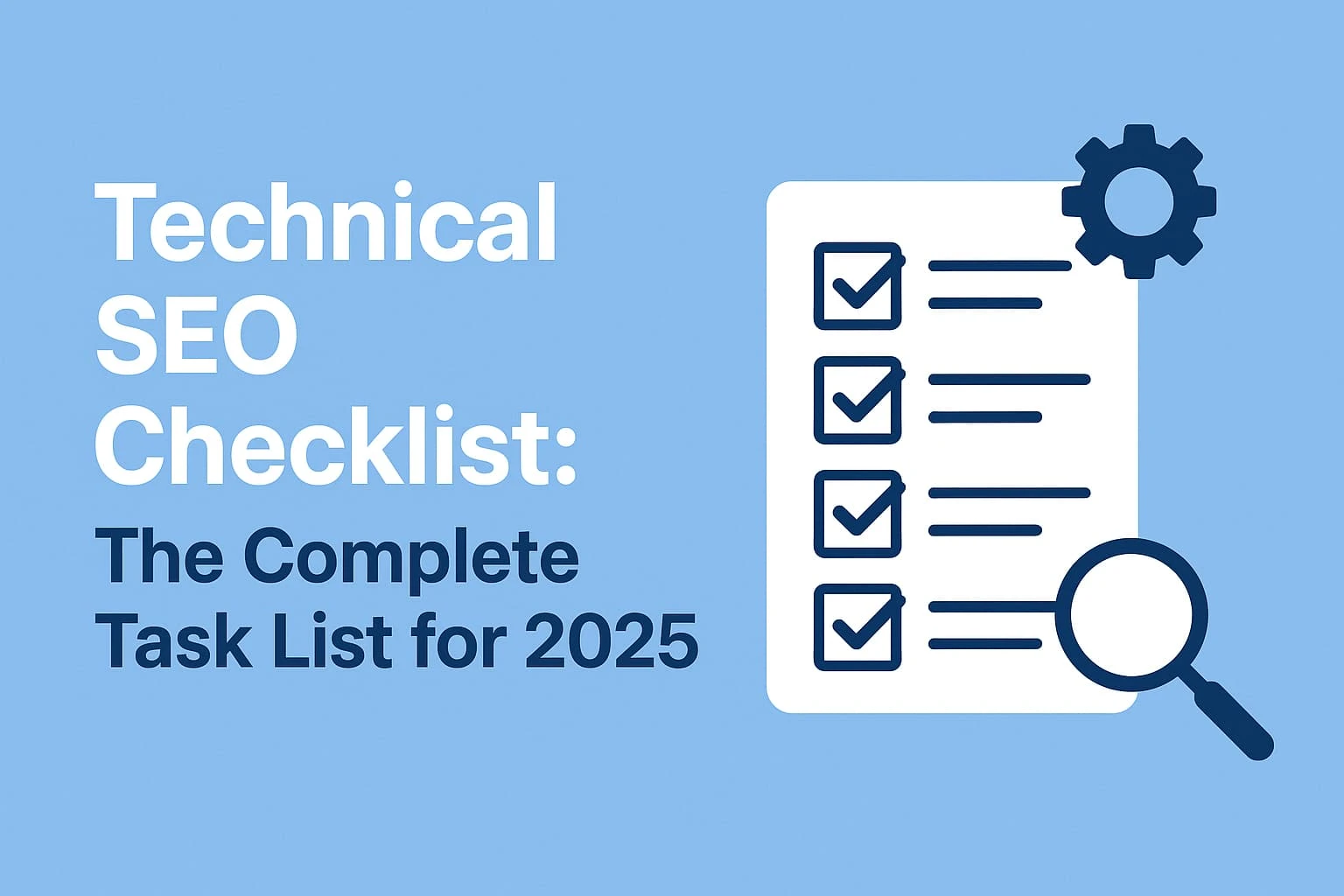You have great content, but is your website's foundation holding it back? In 2025, technical SEO is not just for developers—it's a critical component of every marketer's toolkit. A single, unseen error can prevent your most valuable pages from ever ranking.
This checklist is your definitive, step-by-step guide to audit your site's health. Follow these tasks to find and fix the issues that are costing you traffic, and ensure your website is ready for the future of search.
Phase 1: Crawlability and Indexing
This is the most critical phase. If search engines can't crawl and index your site, nothing else matters.
- Task 1: Audit Your Robots.txt File.
- Purpose: This file tells search engine bots which parts of your site they can and cannot crawl. A simple mistake here can block your entire site.
- Action: Verify that your robots.txt file is not blocking any critical pages or resources (like CSS and JavaScript files).
- Task 2: Check Your XML Sitemap.
- Purpose: Your sitemap is a roadmap for search engines. It lists all the pages on your site you want them to know about.
- Action: Ensure your sitemap is up-to-date, includes only canonical URLs, and is free of errors. Submit it to Google Search Console to speed up discovery.
- Task 3: Manage noindex and nofollow Tags.
- Purpose: These tags tell search engines not to index a page or not to follow a link. They are often added by mistake.
- Action: Use a site audit tool to scan for pages with a noindex tag that should be indexed. Also, ensure you are not using a nofollow tag on internal links you want to pass authority to.
- Task 4: Fix Duplicate Content Issues.
- Purpose: Duplicate content confuses search engines and can dilute your rankings.
- Action: Use a canonical tag (rel="canonical") to tell search engines which URL is the preferred version of a page.
Phase 2: Page Speed and Core Web Vitals
Google's Core Web Vitals are a direct ranking signal. A slow site with a poor user experience will struggle to rank.
- Task 5: Test and Optimize Core Web Vitals.
- Purpose: These metrics (LCP, INP, CLS) measure a site's real-world performance. In 2025, INP (Interaction to Next Paint) is the key metric for interactivity.
- Action: Use Google's PageSpeed Insights to test your site's performance. Focus on getting a "Good" score for each metric.
- Task 6: Optimize Images and Videos.
- Purpose: Large media files are the number one cause of slow pages.
- Action: Compress all images, use modern formats like WebP, and implement lazy loading for all images and videos below the fold.
- Task 7: Minify Code and Reduce Unused JavaScript.
- Purpose: Excess code slows down your site.
- Action: Use a plugin or tool to "minify" your CSS, JavaScript, and HTML files by removing unnecessary characters and comments.
Phase 3: Site Structure and Navigation
A well-organized site makes it easy for both users and bots to find what they're looking for.
- Task 8: Fix Broken Internal and External Links.
- Purpose: Broken links create a frustrating user experience and waste crawl budget.
- Action: Use a crawler tool to identify all broken links (404 errors) and either fix them or set up a 301 redirect to a relevant, live page.
- Task 9: Check for HTTP to HTTPS Migration Issues.
- Purpose: Your site must be fully secure with an SSL certificate. An improper migration can lead to ranking loss.
- Action: Ensure all HTTP versions of your URLs have a permanent (301) redirect to their HTTPS counterparts. Also, check for "mixed content" errors where a secure page loads insecure resources.
Phase 4: Structured Data and Authority
This is where you give search engines and AI an explicit roadmap of your content.
- Task 10: Implement Schema Markup.
- Purpose: Structured data (schema markup) helps search engines understand the context of your content and enables rich snippets in the search results.
- Action: Add relevant schema (e.g., FAQPage, HowTo, Article) to your pages. Use Google's Rich Results Test tool to validate your implementation.
- Task 11: Build E-E-A-T Signals.
- Purpose: Expertise, Experience, Authority, and Trustworthiness are critical signals for Google's algorithms and AI models.
- Action: Ensure all content is written by a subject matter expert. Use author bios, citations, and an up-to-date “About Us” page to build trust.
Conclusion
You've completed the 2025 technical SEO checklist. By systematically addressing each of these tasks, you've removed the invisible barriers that may have been preventing your website from reaching its full potential. Make this checklist a quarterly routine, and your site will remain a strong contender in the ever-evolving world of search.
FAQs
Q: Is this technical SEO checklist suitable for beginners?
A: Yes. This checklist is designed to be a comprehensive, step-by-step guide that is easy for marketers, website owners, and beginners to follow. It breaks down complex tasks into simple, actionable steps.
Q: How often should I perform this technical SEO checklist?
A: You should perform a quick audit quarterly to ensure there are no new issues. A full, comprehensive audit should be done at least once a year or after any major website redesign or migration.
Q: Can a free tool do a complete technical SEO audit?
A: Free tools like Google Search Console and PageSpeed Insights are excellent for identifying major issues. For a complete, in-depth audit, paid tools like Screaming Frog, Ahrefs, or Semrush are often necessary to uncover all potential errors.
